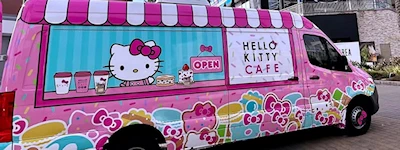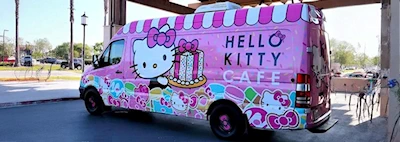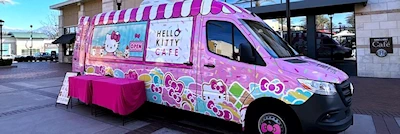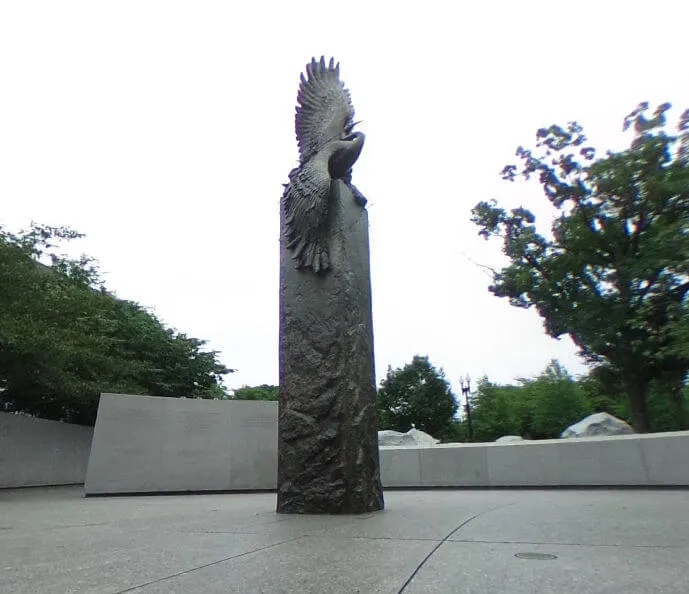National Japanese American Memorial
Event Location
And D Street in Washington
Washington DC, DC 20001
The National Japanese American Memorial to Patriotism During World War II is located at the intersection of New Jersey Avenue, Louisiana Avenue, and D Street in Washington, D.C. The closest Metrorail (subway) stop is the Red Line station at Union Station.
Location
The National Japanese American Memorial to Patriotism During World War II is located at the intersection of New Jersey Avenue, Louisiana Avenue, and D Street in Washington, D.C
The Architect's Intention
The Memorial is designed to commemorate the patriotism of Japanese Americans during World War II. Its design is a response to a dark chapter in our nation’s history when war hysteria and prejudice led to the incarceration of 120,000 Japanese Americans. Many were American citizens by birthright and despite the egregious injustice done to them by their own country, they still felt compelled by a sense of loyalty and duty to fight for our country. When he signed the Civil Liberties Act in 1988, President Ronald W. Reagan stated, “Here we admit a wrong. Here we affirm our commitment to equal justice under the law.” This statement, meant as an apology to all those who suffered civil liberties injustices, is a key part of the ideological fabric of the National Japanese American Memorial to Patriotism during World War II.
Located on a triangular urban site adjacent to the U.S. Capitol, the design of the memorial elegantly responds to the surrounding streetscape. Sensitive landscaping enclosing the memorial creates a space of solitude for an optimal experience. The simple spiral plan juxtaposes the harsh geometry of the site and creates an architectural experience of confinement and release.
Dimensional granite with the inscribed names of those Japanese Americans who died while fighting in World War II envelopes the space and a still pool of water encourages visitors to pause for a moment of self-reflection. The pool is illuminated at night with energy efficient fiber optic lights transforming the memorial. “The Golden Cranes” sculpted by Nina Akamu, a third generation Japanese American, majestically stands at the center of the space.
A program combining water elements, wall inscription, statue, and landscape are designed sensitively and work brilliantly together to create a moving, yet informative, monument.
--Davis Buckley Architects
The Crane Sculpture
A central feature of the Memorial is a sculpture by Nina A. Akamu. As a child Nina and her father would go fishing in Pearl Harbor where the rusting remains of ships destroyed in the Japanese attack could still be seen. She was aware of Pearl Harbor for another reason: her grandfather, Hisahiko Kokubo, an immigrant from Japan who had lived on the island of Kauai for more than 40 years, was among the first in Hawaii to be jailed by federal officials after the outbreak of war because of unsubstantiated suspicion of disloyalty. Kokubo was interned on Sand Island near Honolulu Harbor. Three months later he died of a heart attack, the first Japanese American in Hawaii to die in internment. 'The death of my grandfather,' Akamu said, 'stripped of his civil liberties, is a powerful metaphor for the fragility of human freedoms.'
With a height of 14 feet, the upper portions of the monument are visible above the confines of the Memorial wall, symbolic of rising beyond restrictions to freedom.
The base of the sculpture is rough cut from green Vermont marble which has a beautiful serpentine texture. The identical position of the bronze cranes represents the duality of the universe.
Their bodies are nestled side-by-side with their free wings pressed against each other, symbolizing both individual effort and and communal support, emphasizing interdependency.
Their right wings are held flush to the sides of the base by an incuse strand of barbed wire. The birds have grasped the wire in their beaks in an attempt to break free.
The sculpture is symbolic not only of the Japanese American experience, but of the extrication of anyone from deeply painful and restrictive circumstances. It reminds us of the battles we've fought to overcome our ignorance and prejudice and the meaning of an integrated culture, once pained and torn, now healed and unified. Finally, the monument presents the Japanese American experience as a symbol for all peoples.
Touch the Wing
Touching the Wing symbolizes that you are embracing your responsibility as a citizen to hold yourself and the government accountable to our democratic tenets and civil rights. We honor those who came before us and those who follow.
The sculpture is meant to symbolize the extrication of anyone from deeply painful and restrictive circumstances. It reminds us of the battles we've fought to overcome. So stand in a meaningful place at the Memorial--whether it's at the wing of the sculpture, touching the waterfall, pointing to the name of a family member who died in service, or highlighting a favorite quote--have your photo taken and share on Instagram or Facebook with the hashtag #TouchtheWing. Let's stand together for the Constitutional rights of all Americans.
Contact
Phone: (202) 426-6841
Location Website
Click to Visit
(For Event Information See Event Website Page)
Authentic Japanese Gardens (United States)
Best Japanese Gardens
Japanese Rock 'Zen' Gardens (United States)
Best Japanese Rock 'Zen' Gardens
Japanese Teahouses (United States)
Best Japanese Teahouses
Japanese Museum Art
Japanese Museums Map of Japanese Museums

















